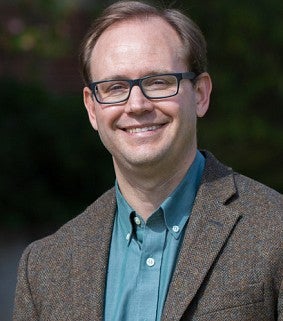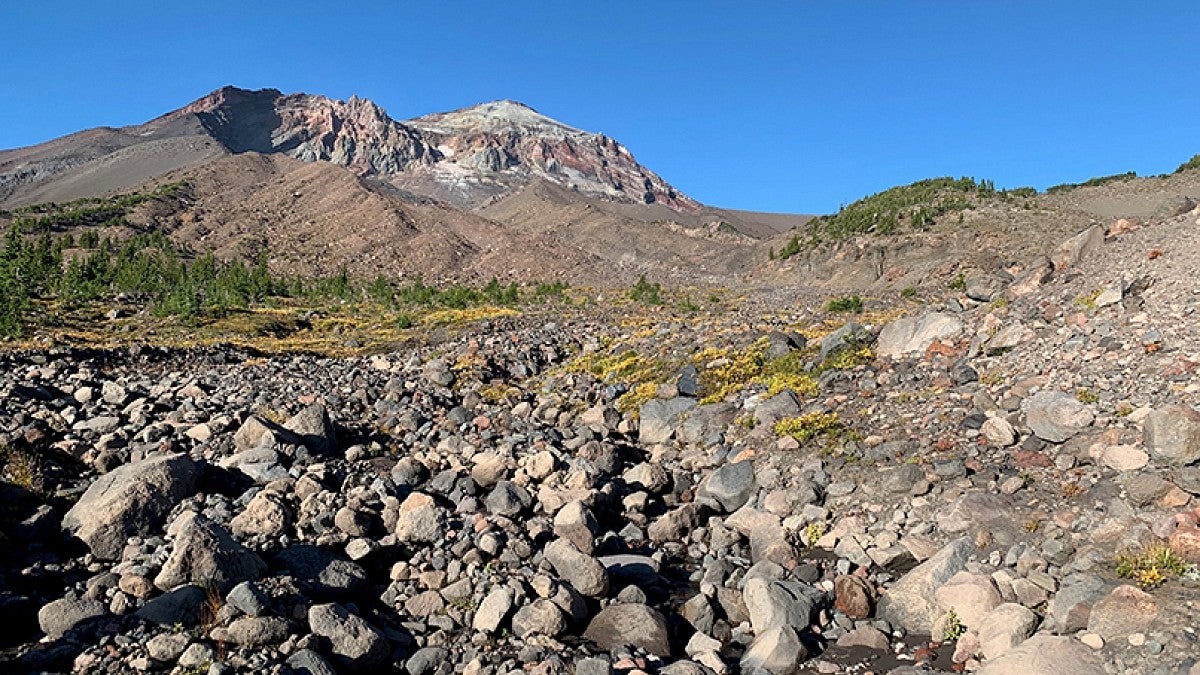Oregon’s Three Sisters Volcanic Complex is among the highest threats for volcanic activity in the West, and a UO volcano scientist is developing a way to identify hazards and forecast the conditions leading to eruptions that could happen in this trio of volcanos.
The UO’s Josef Dufek has started a new research project to uncover more information about the history of eruptions and unrest in these mountains and to use the data to develop new monitoring practices that could help forecast future volcanic activity — in the Three Sisters volcanic complex and beyond. Dufek was awarded a $338,000 award from the National Science Foundation to support the research project.
The project also involves an interdisciplinary team including Nathan Andersen, a former UO postdoctoral researcher now at the United States Geological Survey, Helene Le Mevel of the Carnegie Institution, and Annika Dechert, a graduate student in earth sciences at UO.
The team’s work will focus on South Sister as the source of the most recent volcanic activity in the region. Ground deformation was detected around South Sister through a period of uplift that was most intense from roughly 1998 to 2004.
South Sister’s recent bout of activity is one of the main reasons Dufek wanted to make that specific volcano the focus of his research. He was also drawn to the allure of studying one of the most prominent features of the local skyline and one of Eugene and Bend’s backyard volcanos.
The project is rooted in examining both the recent and the long-term evolution of the mountain’s magma, as the molten rock holds valuable information about the volcano’s track record and its likelihood of future activity.
“The likelihood of eruption and the history of a volcano are all tied to knowing the duration of magma in the crust and how it has evolved over time,” Dufek explained.
Factors like how long the magma has been around and whether it exists in the shallow crust can tell scientists a lot about how prone the volcano is to eruptions.
The first prong of Dufek’s project is focused on digging deeper into the history of South Sister and its magma through geochemistry. This phase of the research involves extracting zircon from rock samples the group collects through field work, where they backpack into the Three Sisters Wilderness and tote out cantaloupe-sized rocks to bring back to the lab for analysis.
Zircon is a crystal that incorporates a lot of radiogenic material. This makes it a prime target for dating analysis as radiogenic material like uranium and thorium decays at a known rate, which means scientists can date the zircon through a process that is the volcanic equivalent of counting tree rings to determine its age.

While the geochemistry side of his research helps him understand what happened in the past, the next major pillar of the project turns to computational and geophysical approaches to determine the conditions beneath the surface of the volcano.
That part of his research involves conducting a gravity survey around South Sister, gathering measurements from all over the mountain to collect data about the local gravity using instruments provided by Le Mevel. Dufek and his team can use the information to help determine where and when a change in mass has occurred under the volcano.
Dufek and Dechert will combine both the retrospective geochemistry analysis and the geophysical assessment into a new computational model that will integrate the different observations to project how the magma is changing in time. The magma reservoir model should be able to isolate magmatic interactions through a multidisciplinary analysis of geophysical and geochemical data.
That builds on existing models for magma evolution through its approach of integrating multiple disciplines through a complex computational simulation.
“Volcanism is a field that involves so many different disciplines, and our main goal with this project is to integrate lots of perspectives into a truly interdisciplinary approach,” Dufek said. “Linking the processes that catalyze the growth, evolution, destabilization and eruption of magma reservoirs to their observable unrest represents an important scientific frontier that requires interdisciplinary collaborations across the geosciences.”
The sophisticated computational facility at UO Research Advanced Computing Services provides the needed resource to help Dufek build and develop the model, which he hopes to leverage into something that can be applied to volcanic systems around the world.
“The goal for this magma reservoir model is to better understand existing hazards and to improve volcanic forecasting globally,” he said.
—By Emily Halnon, University Communications


